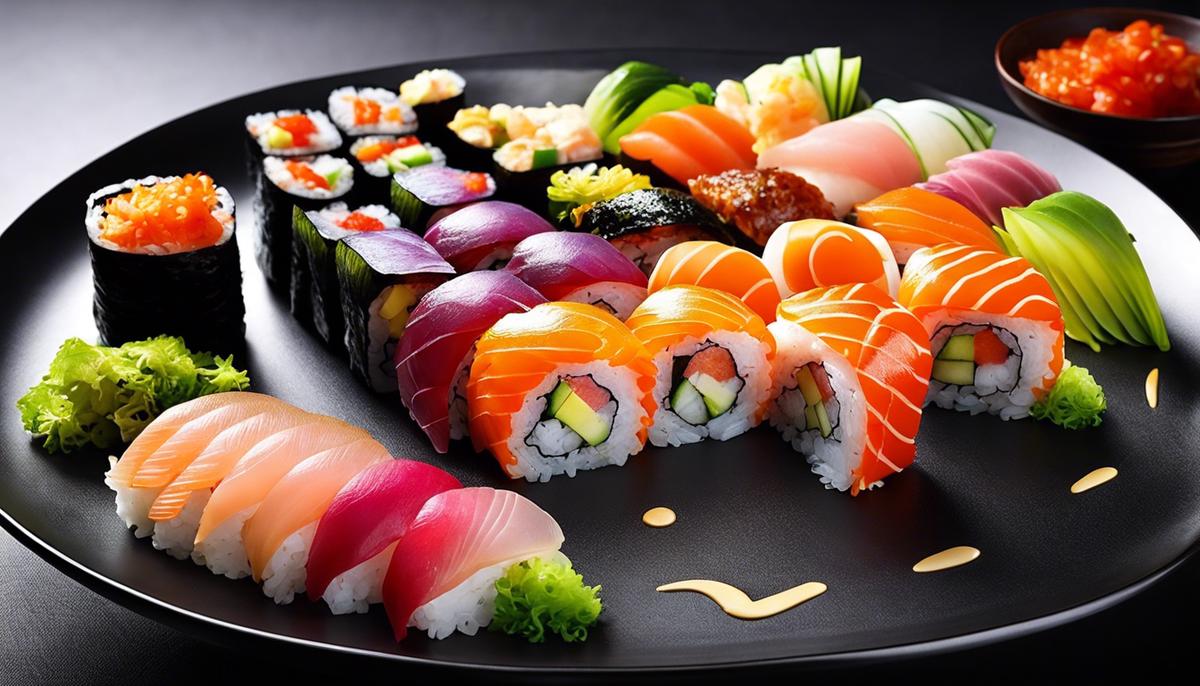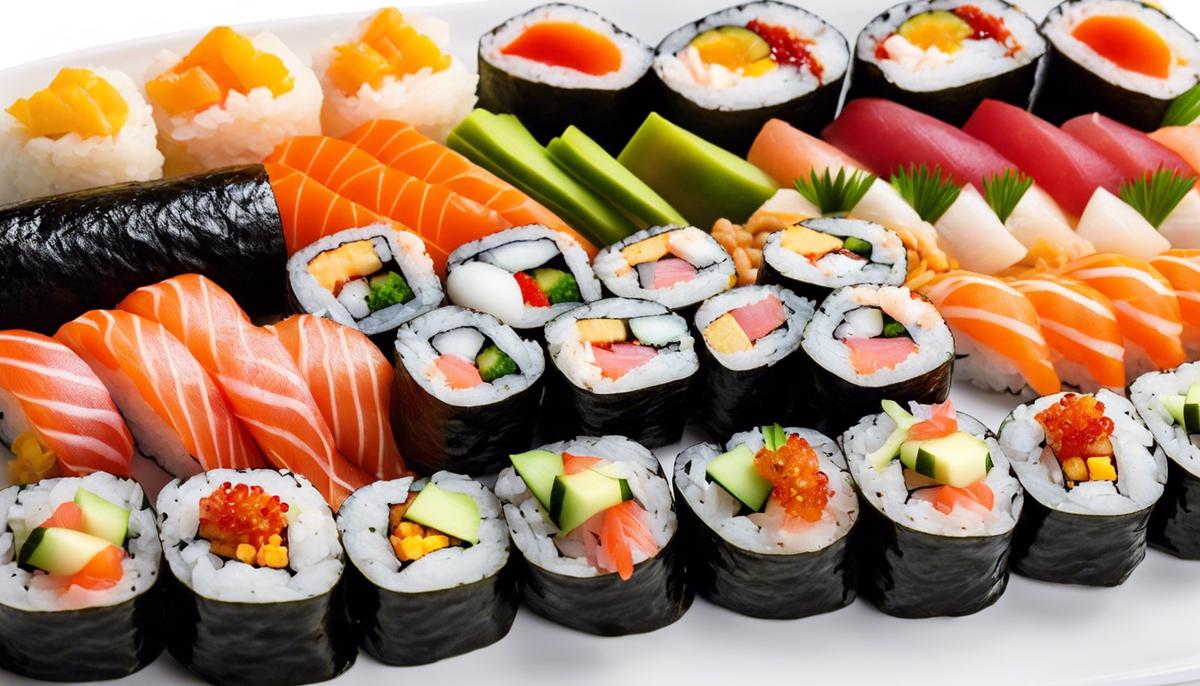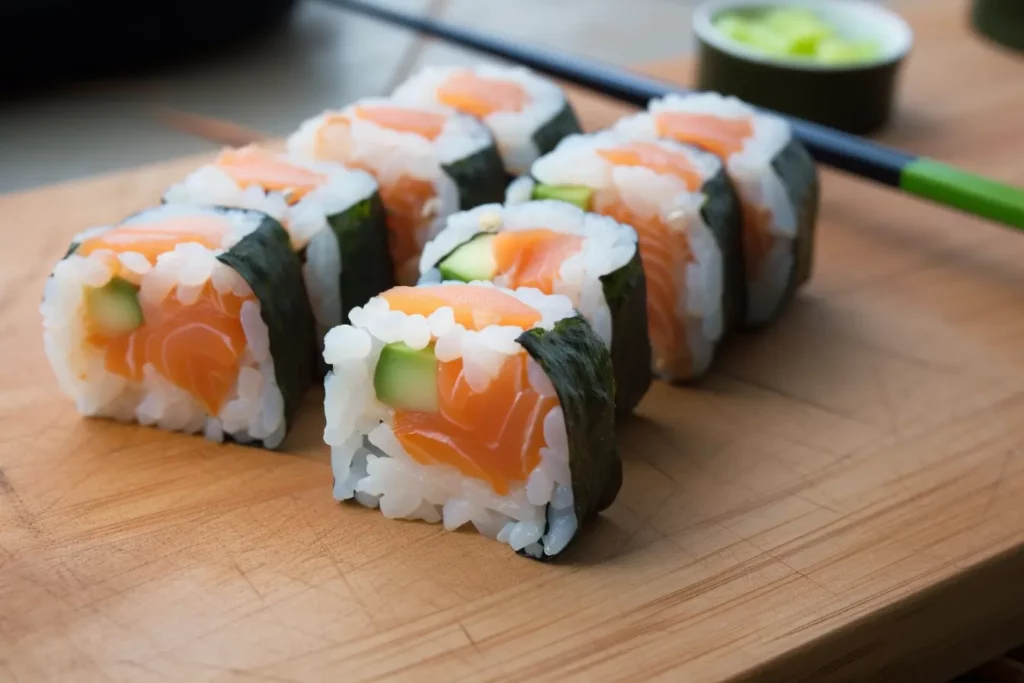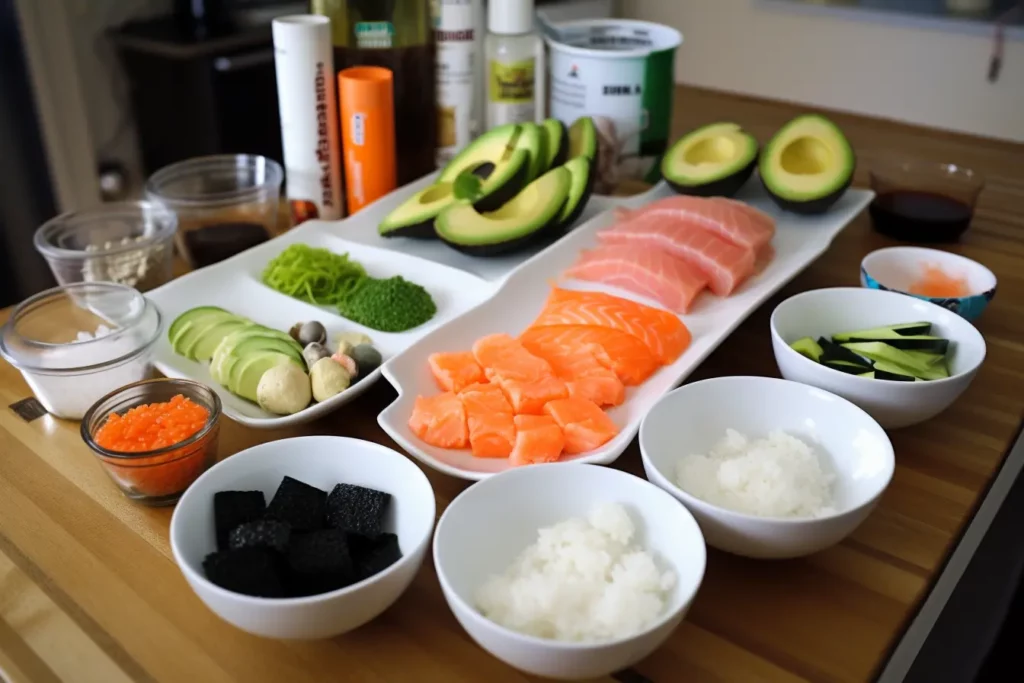The knowledge and awareness of etiquette can make the experience of eating sushi an unparalleled taste experience. Eating sushi goes far beyond just eating tasty rice bites; it is an art that demands elegance and respect. In this sense, this journey will guide us through the basic rules of sushi etiquette and its applications, embedded in Japanese culture and tradition. Here, topics such as the correct handling of chopsticks, the correct handling of soy sauce and ginger and the eating order when eating sushi are highlighted. In addition, special attention is paid to the importance of interaction with the sushi chef.
Basic rules of sushi etiquette
Title: The Refined Art of Sushi Enjoyment: Basic Rules to Know
Sushi is much more than mere food, it is an art form that is enjoyed with respect and love for tradition. The finely composed Japanese delicacy guarantees a feast for the palate, but this fine experience is only maximized if you know and follow the basic rules of eating sushi.
- Purity is key
- Dexterity when holding chopsticks
- Season wisely
- For optimal flavor, rotate the sushi
- Neutralize the taste with ginger in between
- Respect the order
Remember to wash your hands before eating. In Japan, it is not only the use of chopsticks that intensifies the sushi experience, but also eating directly with the hands. Cleanliness is, of course, of the utmost importance.
It is important to master the correct technique when holding the chopsticks. However, you should never leave your chopsticks stuck in the rice, as this is associated with a funeral ceremony in Japanese culture.
Before you spontaneously reach for soy sauce, make sure that some sushi creations are already served with sauce or marinade. If necessary, add only the fish and not the rice to the soy sauce to avoid overloading the taste of the rice.
Although this is not very common in Western culture, it is recommended to turn sushi horizontally and eat it with the fish side first. In this way, the subtle balance between fish and rice is maintained, which enhances the taste experience.
Between the individual pieces of sushi you can eat a piece of ginger. This is supposed to neutralize not only the taste, but also the bacteria and thus ensure a fresh mouthfeel.
Actually, you should start with light sushi and work your way up to the richer taste. This ensures that the subtle flavors aren’t drowned out by heavier, fatty types of fish.
Extensive sushi eating is a real delight and a play of flavors. From the preparation of the rice, to the selection of fresh fish, to the skillful rolling of each individual sushi roll, it is truly an art. However, if you follow the basics of eating sushi, this experience can be enjoyed to the fullest.
Therefore, make your next sushi evening a stylish event full of unforgettable flavor experiences by following these tips!

Order of eating sushi
When enjoying sushi, the order is just as fundamental as in a finely curated multi-course menu. So, when sushi is on the menu, the right order of consumption ensures that each individual variety can develop its unique aroma and impress its palate with the diverse tastes.
First, let’s look at nigiri sushi and maki rolls. Both types of sushi are widely used these days, but it is recommended that you start your gastronomic experience with nigiri sushi. Nigiri, often served with tuna or salmon, is an excellent way to start, as it often has a less strong flavor than maki rolls. Therefore, it is rather unobtrusive and prepares your palate for the stronger flavors to come.
Next, we suggest the transition to the maki rolls. Maki rolls, whether classic or inside-out, usually come with a wider variety of ingredients and stronger flavors. Before you eat maki rolls, take a moment to admire the ingredients and experience their harmony. The maki rolls ensure that your taste experience becomes more intense and best represents the dynamic taste of sushi.
Finally, if it is on the menu, we suggest you finish your sushi enjoyment with the sashimi varieties. Sashimi consists of thin slices of raw fish, here you will experience the pure, unadulterated taste of the sea. Since sashimi has an intense flavor, it is best to eat it last to stimulate the palate and end the taste experience on a high note.
The right order of your sushi meal gives you the opportunity to experience a carefully tuned symphony of flavors that dances on your tongue from mild to strong. However, keep in mind that these guides are only suggestions – the most important thing is to enjoy your sushi experience the way you like it best! Now you’re ready to roll up your sleeves and enjoy the sushi experience to the fullest.

Interaction with the sushi chef
But let’s take it a step further and focus on the attitude towards the sushi chef with all these fine details that we have already discussed. This is an indispensable aspect if we want to fully appreciate the precious Japanese art of sushi enjoyment.
First of all, it’s important to know that the sushi chef – or Itamae – is more than just a simple chef. In Japan, the Itamae is treated with great respect, similar to how we here in Western Europe respect our best chefs. A short bow or a friendly nod of greeting are welcome signals of respect.
A word of praise about the presentation or taste of the sushi will certainly be appreciated as well. But be careful, proceed with sensitivity: criticism or suggestions for improvements are usually not welcome, unless explicitly requested.
The sushi chef is also an excellent source of recommendations. Since sushi relies heavily on fresh, seasonal ingredients, the best options can change daily. So don’t hesitate to ask the Itamae for his opinion.
Be sure to respect the sushi chef’s art by eating the sushi as it is served. This means that, as tempting as it may be, you shouldn’t swap, add, or discard the ingredients. The sushi chef has worked hard to create a culinary masterpiece that is both visually appealing and possesses a unique, harmonious taste.
Just like when tasting a good wine, it’s important to take your time and enjoy the rich, varied flavor of each piece of sushi to the fullest. The sushi chef has put a lot of time and effort into creating this moment of taste perfection, which is why it is essential to perceive this moment consciously and with due mindfulness.
And most importantly — never forget to thank the sushi chef for his work at the end of your meal. A smile and a sincere thank you can make a big difference and show that you appreciate the Itamae’s dedication and artistry.
Always remember: your attitude towards the sushi chef can go a long way in transforming your sushi experience into a true culinary adventure, where you will not only experience the culinary delights of sushi, but also gain a deep respect for the millennia-old tradition and expertise of the Itamae .

Photo by epicurrence on Unsplash
After getting this overview of the fine art of sushi indulgence, you might realize that eating sushi is actually more than just a regular restaurant visit. It’s a taste sensation that commands awe, providing your taste buds with a solyanka of flavors and layers as artful as the preparation of these little bites of rice itself. By understanding and implementing this essential sushi etiquette, the eating order of any type of sushi and the interaction with the sushi chef, every lover of this Japanese art is guaranteed an unparalleled enjoyment experience.


